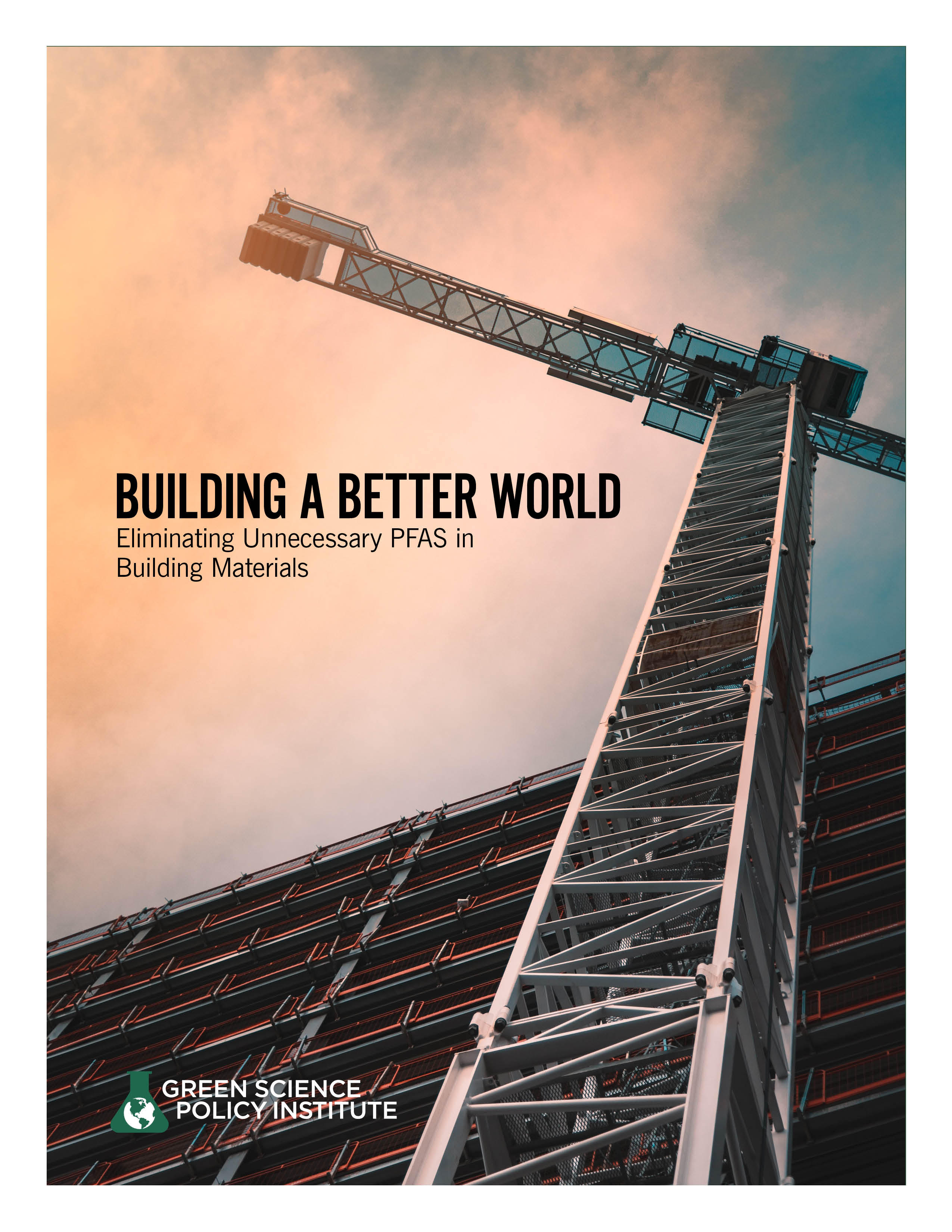[Press Release] Harmful PFAS chemicals are pervasive in building materials
By The Green Science Policy Institute | April 21, 2021

BERKELEY, Calif.—From the floor to the roof, the average building may be rife with persistent and potentially toxic “forever chemicals” called per- and polyfluoroalkyl substances (PFAS). A report released today by the Green Science Policy Institute is the first to document that PFAS, including large fluoropolymers, are used in a wide variety of building materials.
“It’s worrisome that PFAS may be literally wall-to-wall in our homes and offices,” said Tom Bruton, Senior Scientists at the Green Science Policy Institute. “But the good news is that safer alternatives already exist. This is a problem that architects, designers, and manufacturers can solve.”
The authors found that PFAS are added to roofing materials, paints and coatings, sealants, caulks, adhesives, fabrics, glass, and more. This is because PFAS provide functions such as weatherproofing, corrosion prevention, and resistance to stains, grease, and water.
PFAS can make their way into our water, air, food, and indoor dust during the manufacturing, use, and disposal of these materials. Building construction and maintenance workers or do-it-yourselfers may be particularly at risk. For example, tile and grout spray-on waterproofing products containing PFAS have been implicated in several cases of acute lung damage.
Studied PFAS have been associated with a wide range of serious health harms, from cancer to severe COVID-19, and they are contaminating the drinking water of millions. Only a small fraction of PFAS have been tested for toxicity, but all PFAS are either extremely persistent in the environment or break down into extremely persistent PFAS.
“Adding PFAS to building materials leads to pollution that will last decades, even centuries,” said David Johnson, AIA, a Principal at SERA Architects who reviewed the report. “Avoiding PFAS is a high-impact change the building industry can make now for healthier buildings and a healthier world.”
Learn more about PFAS in Building Materials here.
Available for Interviews:
Tom Bruton, Green Science Policy Institute, (773) 628-4452, [email protected]
Location:
Topics: